During the autumn days of August, at the National History Museum and the Military History Museum, many domestic and foreign visitors, especially veterans, were moved by the memories of the August Revolution.
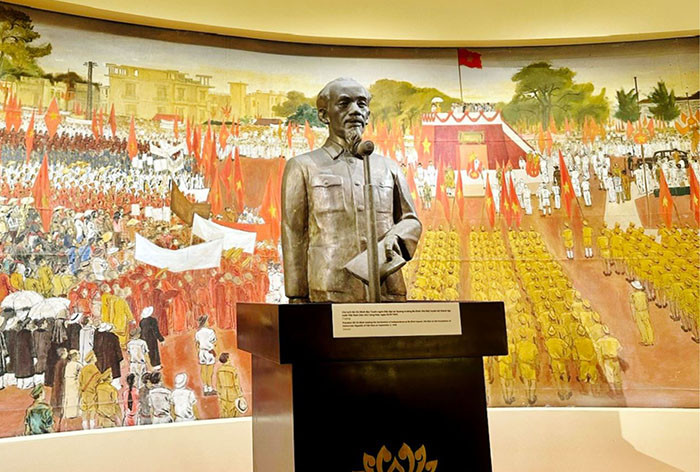
The National Museum of History recreates the sacred scene when President Ho Chi Minh read the Declaration of Independence at Ba Dinh Square (Hanoi) announcing the establishment of the Democratic Republic of Vietnam, September 2, 1945.
Located on Dien Bien Phu Street, Ba Dinh, Hanoi, the Vietnam Military History Museum is a historical site - a famous destination for domestic and international visitors to the capital.
Many visitors were choked up when standing in front of historical moments, precious and unique war documentary images about the lives, years of struggle, imprisonment, sacrifices, and hardships of the Vietnamese army and people to regain independence for the country.
The victory of the August Revolution under the talented leadership of the Party and the great President Ho Chi Minh was a victory of patriotism and the strength of great national unity.
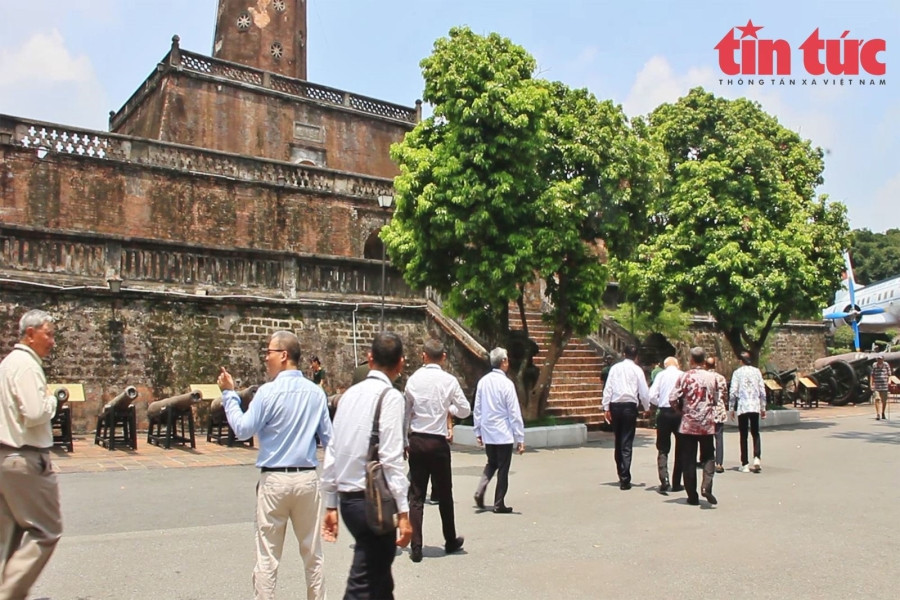
The ASEAN Veterans Club delegation visited the Vietnam Military History Museum on the occasion of Vietnam celebrating the 78th anniversary of the August Revolution and National Day, September 2.
Some museums in the capital Hanoi on this occasion have dedicated separate exhibition areas for primitive homemade weapons, groups of weapons, and means used by the people in the uprising to seize power in August 1945, from machetes, spears, halberds, swords, sticks,... to gun types such as: Self-made flintlock guns of Cao Bang guerrillas; self-made flintlock guns of Phu Tho guerrillas; bamboo sticks of the people of An Giang, Tien Giang...
“Collections of newspapers, revolutionary leaflets, and flags used by people during the August 1945 Uprising have also attracted public attention in the past week,” said Ms. Pham Thi Mai Thuy, Head of the Public Education Department (National History Museum).
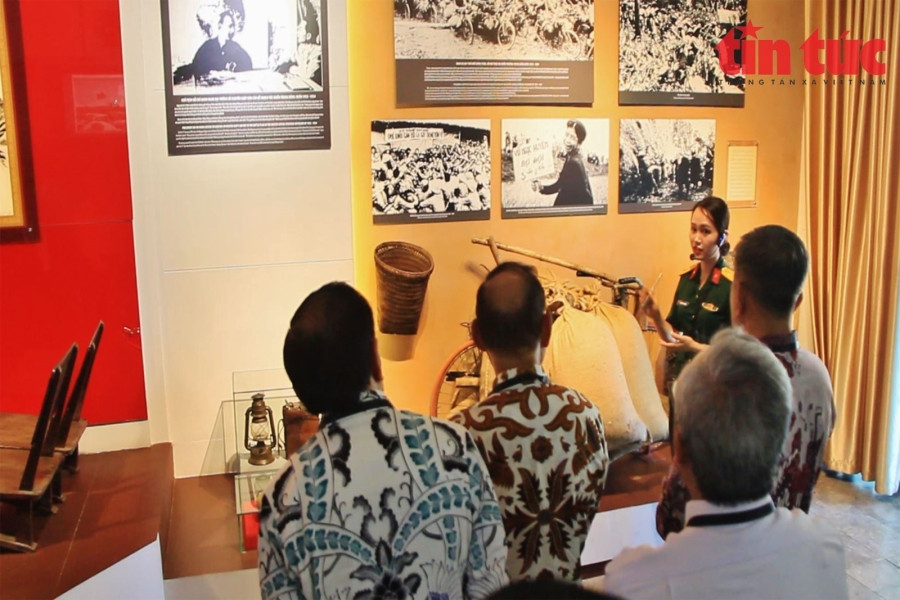
The tour guide introduces images, artifacts, and scientific documents reflecting Vietnam's military history through each period.
In particular, the flags used in the uprising of the people of Quang Ngai; the flags hung at the Tan Trao National Congress; the flags of overseas Vietnamese hanging in Paris (France) to celebrate Independence Day; the badges of the people of Hanoi used on the day of the General Uprising... Many artifacts associated with the Bac Son and Nam Ky uprisings and the Do Luong mutiny are considered important historical evidence, demonstrating the seething revolutionary atmosphere in all localities throughout the country.
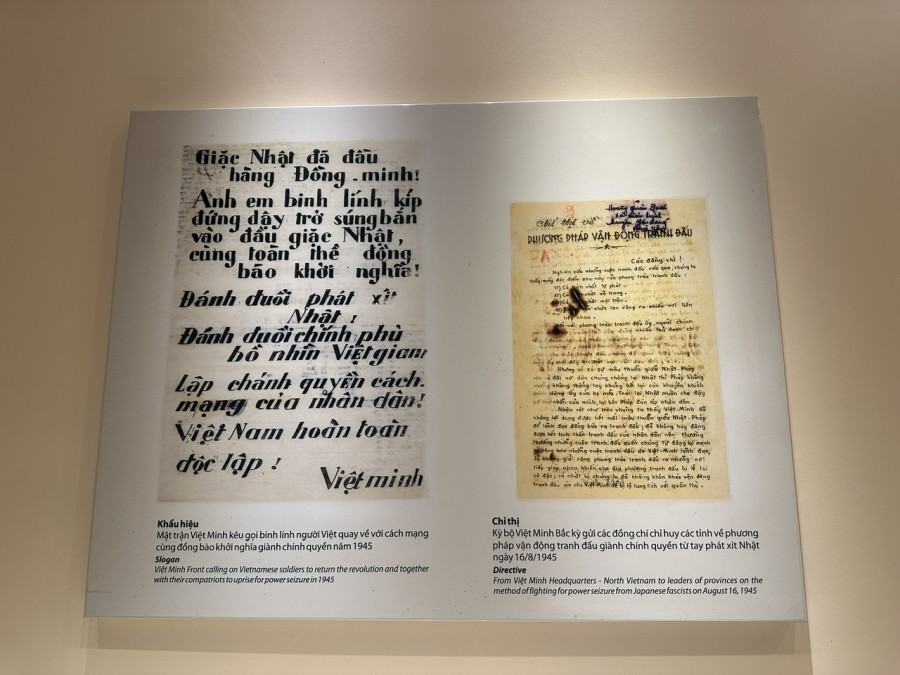
Leaflets of the Viet Minh Front called on Vietnamese soldiers to return to the revolution and join their compatriots in an uprising to seize power in 1945.
According to Ms. Pham Thi Mai Thuy, the collections of leaflets and newspapers during the August Revolution in 1945; the group of documents and materials disseminating the Party's guidelines and the Viet Minh Front are considered the highlights of this exhibition. The most notable of these are: Resolution of the 8th Conference of the Central Committee of the Indochinese Communist Party; Manifesto of the Viet Minh Front in 1941; Directive of the Viet Minh General Department; Uprising Order of the Provisional Command Committee of the liberated area on August 12, 1945 signed by comrade Vo Nguyen Giap.
Hundreds of revolutionary leaflets from the revolutionary period are being preserved at the National History Museum. During this historical period, leaflets were an effective form of propaganda used to rally and mobilize the masses to unite into a strong bloc, following the Party and contributing to the victory of the August Revolution in 1945.
Leaflets were small pieces of paper that were lithographed or handwritten. Most of the leaflets were collected from the French secret police records or the records of imprisoned revolutionaries. The language of the leaflets was concise and easy to understand for the entire population. To make and distribute leaflets to the people, the revolutionaries not only devoted their whole minds but also had to pay with blood, even their lives.
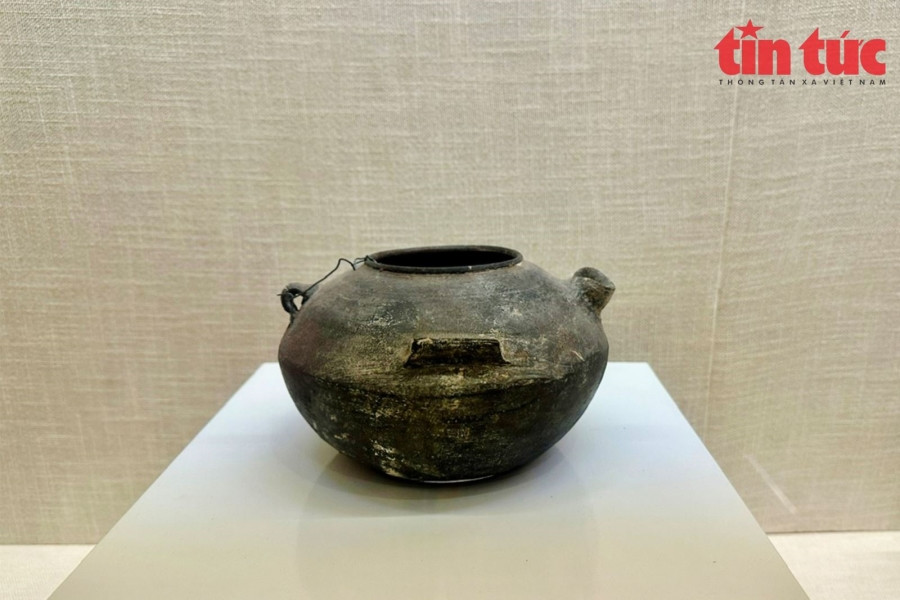
The kettle used by highlanders to boil medicine for President Ho Chi Minh when he was sick in Tan Trao, Son Duong district (Tuyen Quang) in 1945.
Director of the Vietnam Military History Museum, Lieutenant Colonel Le Vu Huy said: “The Vietnam Military History Museum is storing hundreds of images, artifacts, and valuable documents related to the August Revolution and National Day, September 2. One of the special souvenirs that attracts the attention of many visitors is the Brass Instruments. On September 2, 1945, the sound of this brass instrument combined with the song 'Marching Song' resounded on the day Uncle Ho read the Declaration of Independence before all the people of the country, giving birth to the Democratic Republic of Vietnam. The brass instruments were presented to the Army Museum (now the Vietnam Military History Museum) by comrade Dinh Ngoc Lien in 1959.”
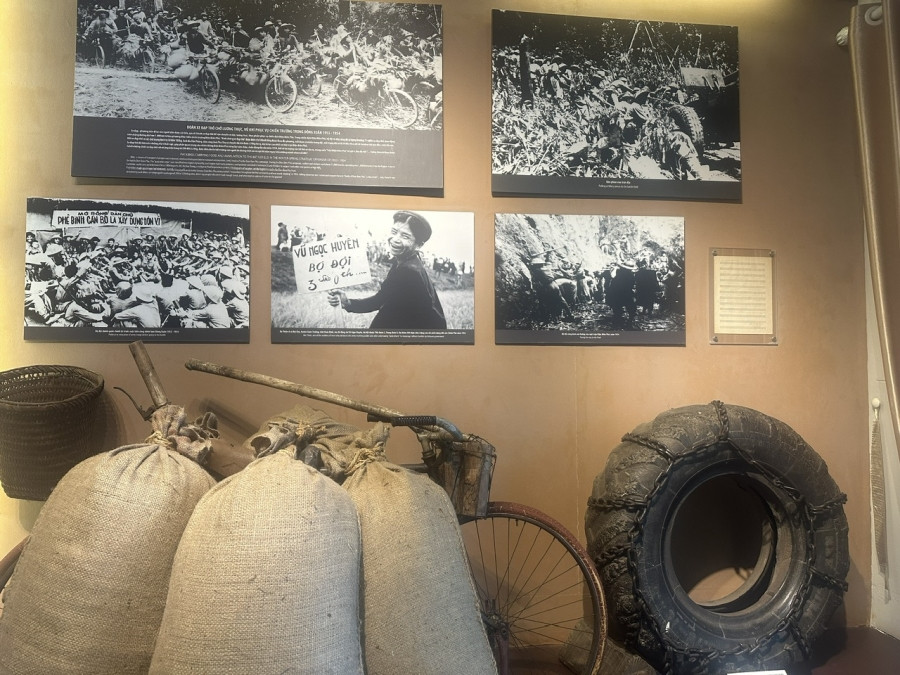
Bicycle convoy carrying food and weapons to serve the battlefield in the Winter-Spring of 1953 - 1954 (top photo, left)
Recently, especially during the weekend, the Vietnam Military History Museum and the National History Museum have welcomed many domestic and foreign visitors.
Visiting the museum, student Truong Quang Huy - Faculty of Scientific Socialism (Academy of Journalism and Propaganda) shared: “This is the first time I have thoroughly understood each historical period thanks to the tour guide's introduction. I was very moved when I watched the documentary films, saw the weapons and relics of the old war. There were even artifacts and stories told that made me cry because I felt the great sacrifices of the soldiers and the losses caused by the war. We try to study well to contribute to the Fatherland”.
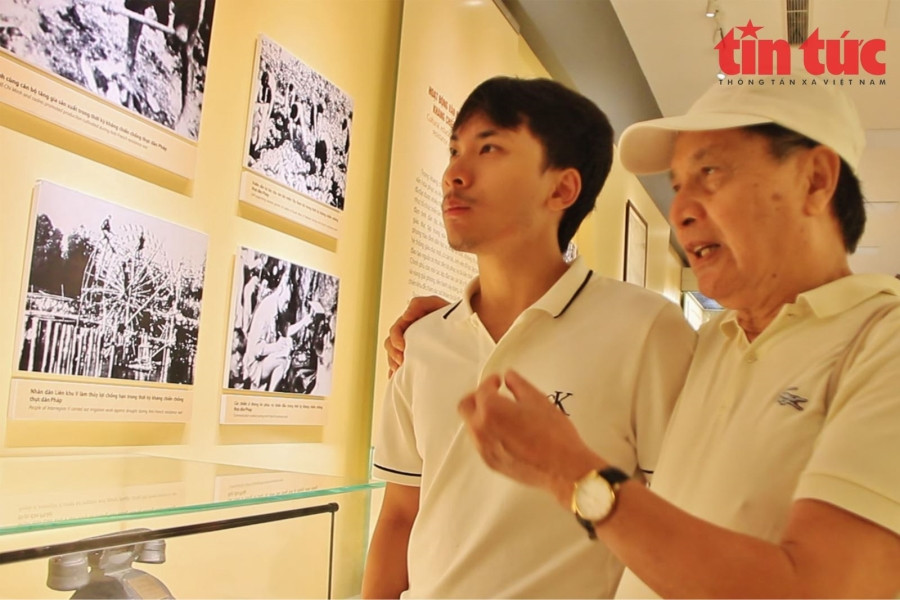
Mr. Le Minh Hoa - Hoang Quoc Viet Street, Cau Giay, Hanoi took his nephew (a German student returning home) to visit the National Museum of History.
Visiting the museum, they - domestic and international veterans, and ethnic minority groups - could not hide their emotions when witnessing with their own eyes the artifacts recreating a difficult but heroic time. Previous generations introduced to the next generation the origin and meaning of the relics and artifacts that carry the sacred value of patriotism and national pride.
According to Tin Tuc newspaper